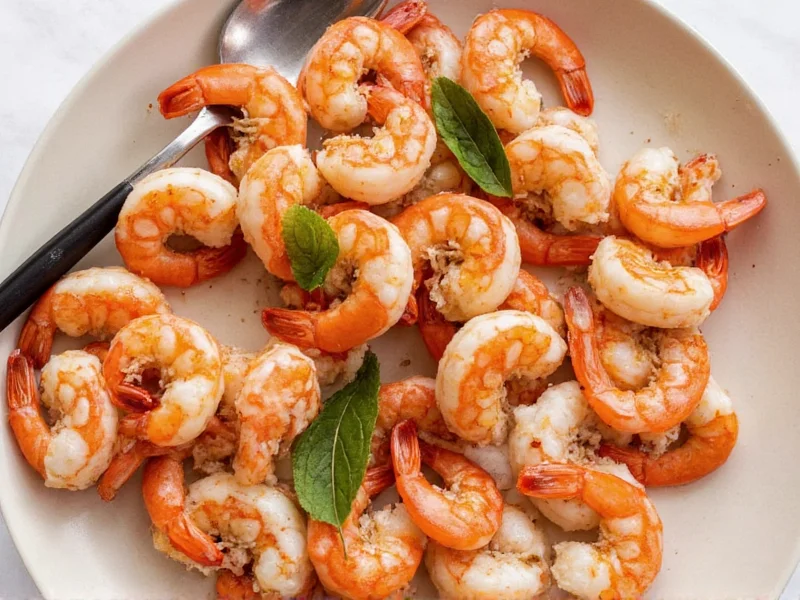Shrimp's delicate, slightly sweet flavor makes it incredibly versatile, but choosing the right spices is crucial for enhancing rather than overwhelming this popular seafood. The perfect spice blend can transform simple shrimp into a restaurant-quality dish with minimal effort. Understanding which spices work best with shrimp's unique characteristics ensures your culinary creations hit the right notes every time.
Top Individual Spices for Shrimp
Garlic Powder
Garlic powder provides consistent flavor without the risk of burning that fresh garlic carries. It penetrates shrimp beautifully during cooking, creating that classic garlic shrimp profile everyone loves. Use 1 teaspoon per pound of shrimp for balanced flavor that enhances without dominating. Unlike fresh garlic, powder distributes evenly across shrimp surfaces, ensuring every bite delivers that savory umami punch that complements seafood perfectly.
Paprika (Sweet and Smoked)
Sweet paprika adds subtle earthiness and vibrant color without heat, while smoked paprika introduces a complex, campfire-like dimension that works exceptionally well with grilled shrimp. For most preparations, 1-2 teaspoons per pound creates the ideal flavor foundation. Smoked paprika particularly shines in recipes where you want to mimic outdoor grilling flavors indoors. The natural sweetness in paprika harmonizes with shrimp's delicate ocean flavor, creating a balanced taste profile that appeals to most palates.
Cayenne Pepper
When you want to add heat without overwhelming complexity, cayenne delivers clean, straightforward spice. Start with just 1/8 teaspoon per pound of shrimp and adjust to taste. Cayenne's pure capsaicin heat cuts through shrimp's richness while allowing other flavors to shine. It's particularly effective when combined with other spices in blends, providing that subtle background warmth that makes shrimp dishes memorable without making them uncomfortably hot.
Black Pepper
Freshly cracked black pepper offers floral, pine-like notes that complement shrimp's sweetness better than pre-ground versions. Use 1/2 to 1 teaspoon per pound for optimal results. The volatile oils in freshly cracked pepper create aromatic compounds that enhance shrimp's natural flavors without competing with them. For best results, add pepper after cooking to preserve its delicate flavor compounds, which can become bitter when exposed to high heat for extended periods.
Popular Spice Blends for Shrimp
| Spice Blend | Key Ingredients | Best Cooking Method | Flavor Profile |
|---|---|---|---|
| Cajun/Creole | Paprika, cayenne, garlic, onion, oregano, thyme | Searing, grilling | Spicy, earthy, aromatic |
| Mediterranean | Lemon zest, oregano, garlic, basil, parsley | Sautéing, broiling | Herbaceous, bright, citrusy |
| Asian-Inspired | Ginger, garlic, five-spice, chili flakes | Stir-frying, steaming | Warm, aromatic, slightly sweet |
| Caribbean Jerk | Allspice, thyme, scotch bonnet, cinnamon | Grilling, roasting | Spicy, sweet, complex |
Old Bay Seasoning
This classic seafood blend featuring celery salt, paprika, and black pepper creates that authentic Chesapeake Bay flavor profile. Use 1-2 tablespoons per pound of shrimp for traditional preparation. Old Bay's balanced combination of salt, pepper, and paprika creates a flavor profile that enhances rather than masks shrimp's natural sweetness. For best results, toss shrimp in melted butter or olive oil first, then coat with Old Bay before cooking to help the spices adhere and prevent burning.
Homemade Mediterranean Blend
Create your own blend with 2 parts dried oregano, 1 part lemon zest, 1 part garlic powder, and 1/2 part black pepper. This combination works particularly well for shrimp scampi or grilled preparations. The citrus notes in lemon zest cut through shrimp's richness while the oregano provides earthy depth. Mediterranean spice blends typically avoid heavy heat, focusing instead on herbaceous notes that complement rather than compete with seafood's delicate flavor.
Timing Matters: When to Add Spices to Shrimp
Understanding when to apply spices significantly impacts your final dish. For dry rubs, coat shrimp 15-30 minutes before cooking to allow flavors to penetrate without drawing out moisture. Acidic components like lemon juice or vinegar should be added after cooking to prevent premature 'cooking' of the shrimp. When sautéing, add dried spices to hot oil for 30 seconds before adding shrimp to bloom their flavors. For grilled shrimp, oil the shrimp first, then apply dry spices to prevent burning on the grill grates.
Over-spicing remains the most common mistake home cooks make with shrimp. Because shrimp cooks quickly and has a delicate flavor profile, less is often more. Start with conservative amounts—you can always add more after cooking but cannot remove excess spices. Remember that salt draws out moisture, so if using salt-based blends like Old Bay, reduce additional salt elsewhere in your recipe.
Regional Spice Traditions for Shrimp
Different culinary traditions have perfected shrimp spice combinations over centuries. In Spanish cuisine, smoked paprika and garlic form the foundation of classic gambas al ajillo. Thai cooking often combines shrimp with lemongrass, galangal, and kaffir lime for aromatic curries. Mexican ceviche relies on lime juice, cilantro, and subtle chili heat to 'cook' raw shrimp through acid rather than heat. Understanding these regional approaches provides valuable insight into complementary flavor profiles that have stood the test of time.
For beginners, starting with simple two-ingredient combinations like garlic and lemon pepper creates impressive results with minimal effort. As your confidence grows, experiment with more complex blends, always keeping shrimp's delicate nature in mind. The perfect shrimp seasoning enhances rather than masks—the goal is to taste the shrimp first, with spices playing a supporting role.











 浙公网安备
33010002000092号
浙公网安备
33010002000092号 浙B2-20120091-4
浙B2-20120091-4